
The story of urbanism traditionally begins in what is today southern Iraq. There, around 5,500 years ago, the Sumerian settlement of Uruk developed on the banks of the Euphrates River. At its peak, some 50,000 people, including nobles, artisans, merchants, and slaves, are thought to have lived within the city’s mudbrick walls, which enclosed two square miles. This large urban population existed thanks in part to an agricultural surplus managed by a centralized bureaucracy that tracked economic transactions on cuneiform tablets. But a few hundred years before Uruk emerged, some 1,700 miles to the northwest in the forest-steppe of central Ukraine, farmers with no written language were already living in settlements so large they sprawled over an area up to 1.5 square miles, and were home to perhaps as many as 20,000 people. In age and size, these so-called Trypillia megasites rivaled the earliest cities of Mesopotamia. But that’s where the similarities end.
While imposing central temple complexes anchored cities such as Uruk, a typical Trypillia megasite featured an empty space in the middle surrounded by thousands of identical homes arranged in oblong concentric rings. Archaeologists believe that the farmers who lived in these huge settlements thrived without rulers, without monuments, and without wealth disparities, all elements that were present at Uruk and other early cities. “We’re sure that they’re not cities in a classic sense,” says John Chapman, a Durham University archaeologist. “They’re probably egalitarian, but that sort of idea is really new to urban studies. Whoever heard of an urban center that’s not run by a strong hierarchy?” Understanding these contradictions offers a real challenge for archaeologists working at Trypillia sites.
This story is from the {{IssueName}} edition of {{MagazineName}}.
Start your 7-day Magzter GOLD free trial to access thousands of curated premium stories, and 9,000+ magazines and newspapers.
Already a subscriber ? Sign In
This story is from the {{IssueName}} edition of {{MagazineName}}.
Start your 7-day Magzter GOLD free trial to access thousands of curated premium stories, and 9,000+ magazines and newspapers.
Already a subscriber? Sign In
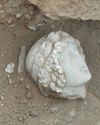
Digs & Discoveries - A Friend For Hercules - Archaeologists discovered a finely carved head depicting Apollo, god of the sun, music, and poetry.
While digging at the crossroads of the two main streets in the ancient city of Philippi in northern Greece, archaeologists discovered a finely carved head depicting Apollo, god of the sun, music, and poetry.
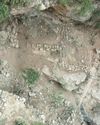
Digs & Discoveries - A Fortress Sanctuary - A sprawling 2,000-year-old fortress in the Zagros Mountains of Iraqi Kurdistan appears to have included a sanctuary dedicated to the ancient Persian water goddess Anahita.
A sprawling 2,000-year-old fortress in the Zagros Mountains of Iraqi Kurdistan appears to have included a sanctuary dedicated to the ancient Persian water goddess Anahita.
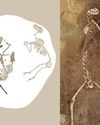
Like Cats And Dogs – Archeologist fund the skeleton of a male Eurasian lynx (Lynx lynx), a notoriously shy creature.
Оn the periphery of Zamárdi, an ancient lakeshore settlement in west-central Hungary, archaeologists uncovered a nearly five-foot-deep beehive-shaped pit with the skeletons of four adult dogs buried in successive shallow layers.
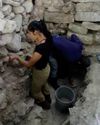
A Dynasty Born In Fire- How an upstart Maya king forged a new social order amid chaos
At the beginning of the Terminal Classic period (ca. A.D. 810-1000), many of the great kingdoms of the southern Maya lowlands-among them Tikal, Palenque, and Calakmul-were being abandoned or collapsing. For many years, scholars have assumed that most, if not all, the other kingdoms across the Maya world must have also been in steep decline.
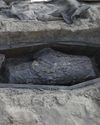
Medical Malfeasance - Archaeologists uncovered two coffins during excavations of a nineteenth-century cemetery in Quebec City that provide evidence of the illicit practice of diverting corpses for the study of human anatomy.
Archaeologists uncovered two coffins during excavations of a nineteenth-century cemetery in Quebec City that provide evidence of the illicit practice of diverting corpses for the study of human anatomy. Starting in 1847, medical students were required to have practical experience studying human anatomy, but legal options to procure cadavers were limited
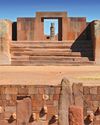
RISE AND FALL OF TIWANAKU
New dating techniques are unraveling the mystery of a sacred Andean city
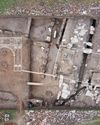
Making a Roman Emperor
A newly discovered monumental arch in Serbia reveals a family's rise to power in the late second century A.D.
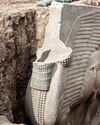
The Assyrian Renaissance
Archaeologists return to Nineveh in northern Iraq, one of the ancient world's grandest imperial capitals

Java's Megalithic Mountain
Across the Indonesian archipelago, people raised immense stones to honor their ancestors
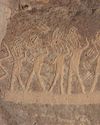
THE SONG IN THE STONE
Located in a desert gorge in southern Peru, Toro Muerto is one of the richest rock art sites in South America. It includes at least 2,600 boulders bearing petroglyphs, many featuring figures known as danzantes who appear to be dancing.